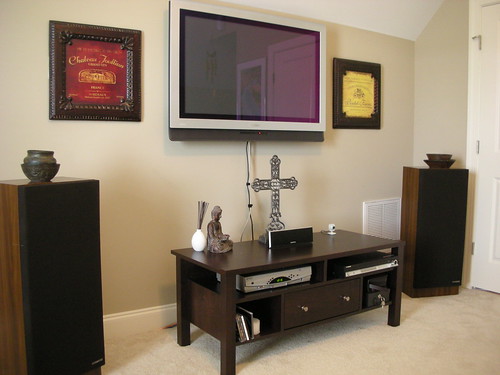AWG stands for American Wire Gauge, a standardised system of measuring the cross-sectional area of a wire. This is used to determine how much current a wire can handle. AWG causes much confusion for consumers, as the standard can be a little difficult to understand. Is 12 AWG better than 14 AWG or vice versa? How come one cable looks thicker than another even though they have identical AWG? Is AWG a good indicator of quality? Does AWG matter, and if so, how?
These are all good questions, and we'll get to them shortly. Firstly, let's briefly touch on how AWG is actually calculated.
How is AWG calculated?
If a cable was a solid circular wire, then AWG is fairly straightforward to calculate. Take the area (pi x radius squared) to get the cross-sectional area, and look up the AWG chart (example below) to work out AWG. If a cable has multiple strands, a similar operation is done to work out the cross-sectional area of each strand, which is then simply multiplied by the number of strands to get the total AWG. However be careful when comparing this figure as AWG is not linear. For every extra 3 AWG, it is half the cross-sectional area. So 9 AWG is about half of 6 AWG, which is half again of 3 AWG. Hence 3 AWG is quadruple the thickness of 9 AWG.
How does AWG affect electrical properties?
You would've noticed by now that the smaller the AWG, the bigger the cable. Larger cables will have less DC resistance, which translates to less power loss. For applications to home theatre, this is certainly true up to an extent. A rule of thumb is that for smaller speakers, a cable of around 17 AWG is sufficient, whereas for larger speakers anything up to 12 AWG or more will give you good results.
How come some cables of the same AWG look different in thickness?
Two factors dominate here. Firstly, the AWG only takes into account the internal conductors. Therefore, a cable manufacturer could easily increase the thickness of the plastic jacket to make the cable appear thicker. This isn't necessarily a bad thing, as up to a point increased jacket thickness reduces other unwanted properties. Just make sure that you don't compare them by sight.
The other factor why two same AWG cables may look different in thickness is the way the internal strands are designed. Some cables have thinner strands, while others have thicker strands. Depending on the size and placement of these strands, cables can be made to look thinner or thicker than they are.
Is AWG a good indicator of quality?
In a nutshell, no. A large AWG (small cable) may certainly be too small for a particular application (for example, you shouldn't be using a 24 AWG cable to run your front speakers). However, AWG is a measure of quantity, not quality. You should ensure that all of your speaker cables are of at least OFC purity.
Does AWG matter? How so?
AWG certainly matters. You need to ensure that the cable you are using is sufficient to handle the power you're going to put through them. Additionally, if you are doing a longer run, then even more thickness would be required. However, some people get caught up too much in AWG and forget the fact that once a sufficient thickness is reached, other factors come into play. This then becomes more a matter for "audiophile" features to resolve, such as using higher quality materials such as silver conductors or improved design.
Conclusion
Wire gauge is certainly a good fundamental indicator of how sufficient a cable is for your application. However, it is by no means a judgement on quality, or a specification to look at exclusively. As a general rule of thumb, after about 11-12 AWG, thickness becomes much less of a factor, whereas for most hi-fi applications 18-19 AWG would be the minimum cables to use.








